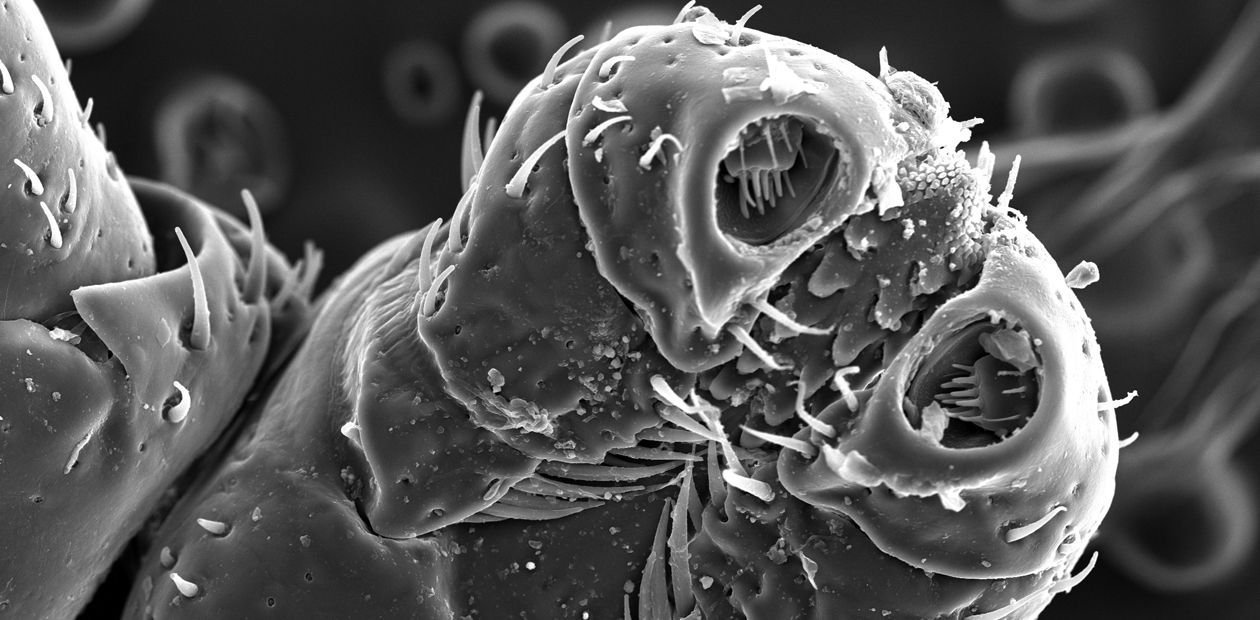Introductory Lecture
As early as in the prehistoric times, people noticed that feral animals were involved in the outbreaks of some severe diseases, which is confirmed by oral evidence and records retained in different cultures. However, the first scientific proofs were obtained only in the 19th century (Korenberg, 2000, 2006). The examples are the works by J. Nott (1848), who found that mosquitoes were “guilty” of spreading malaria and yellow fever, and by T. Smith and F. Kilborne (1893), who demonstrated that ixodid ticks vectored cattle piroplasmosis. In the very early 20th century, a team of French researchers experimentally confirmed that mosquitoes transmitted leishmaniasis, a disease caused by flagellated protozoans. Later, C. Nicolle, their countryman, who got the Nobel Prize (1928) for identification of the common body louse as the vector of epidemic typhus, also discovered that the spirochetes borne by argasid ticks transmitted relapsing fever.
Note that many of these researchers risked their lives and health, some of them making experiments with themselves. In particular, J. Lazear died of yellow fever at the age of 31, when he and three other doctors allowed infected mosquitoes to bite them in order to find out the precise mechanism of disease transmission. H.T. Ricketts, an American pathologist who laid the foundations for the current concept of the role of arthropods in the circulation of the causative agents of severe human and animal diseases (Rocky Mountain spotted fever and others), died of epidemic typhus. After him, the corresponding pathogens got the name rickettsias.
The pages of the history describing the search for the specific vectors of trypanosomes, causing the notorious sleeping sickness, wiping away regions of the Dark Continent, are truly dramatic. As early as the late 19th century, D. Bruce, a doctor with the British colonial forces, and his wife clarified the role of blood-sucking flies in transmission of trypanosomes, and M. Taute, a military doctor, proved in 1912 that not all trypanosome species were pathogenic for humans by allowing 93 tsetse flies to bite him and then repeated this self-experiment with 77 infected flies. The next self-experimenter, J.F. Corson, a military doctor, was infected by a fly bite and saved only thanks to timely treatment. However, he did not stop there — he injected himself with the blood of an infected guinea pig and used his own blood for injecting experimental animals. All participants of this experiment were infected, and the doctor was saved again. This made it possible to prove that these parasitic protozoans did not lose their pathogenicity in the human body and that the trypanosomes from different regions of Africa were equally dangerous for humans despite their external distinctions.
All these discoveries confirm that wild animals can be carriers and vectors of pathogens causing human infectious or parasitic diseases, currently referred to as zoonoses or zooanthroponoses; however, despite the importance of this information, for a long time it had remained a mere collection of facts. The revolution in this area is associated with the name of E.N. Pavlovsky, an outstanding parasitologist, who in his presentation at the general meeting of the USSR Academy of Sciences on May 29, 1939, briefed the basic framework of his doctrine on the natural nidality of infectious diseases, which became part of the “gold reserve” of biomedical science.
It is generally accepted that the background for Pavlovsky’s doctrine was formed by analysis of the data on high incidence of dermal leishmaniasis among the people who first came to the Turkmen Murghab valley in the second half of the 19th century and the studies by D.K. Zabolotnyi, an outstanding Ukrainian bacteriologist, who confirmed involvement of fleas in the transmission of the plague causative agent among wild rodents. However, this is only true for one part of the doctrine, namely, for the natural nidality of the so-called transmissible diseases vectored by blood-sucking arthropods. In general, the doctrine of natural nidality of infectious and parasitic diseases was the final chord in a tremendous number of Pavlovsky’s own observations and experiments, to say nothing of his very broad knowledge, phenomenal erudition, and encyclopedic mentality.
Besides, in 1928–1964 Pavlovsky and his followers organized over 200 (!) integrated research expeditions to different republics of the Soviet Union and adjacent foreign countries, which allowed them to find out the intimate connections between the major elements of natural ecosystems, that is, between causative agents of diseases, their reservoirs, and vectors. In particular, they conclusively proved that blood-sucking arthropods received pathogens from one type of animals (donors) and transmitted them via their bites to other animals (recipients). Interestingly, the circulation of pathogens between the fellow members of a biocenosis may continue for an indefinitely long time (Pervomaisky et al., 1979).
The essence of Pavlovsky’s doctrine can be formulated in just a few words: The causative agents of many diseases dangerous for humans have emerged and exist in nature independently of man, who is a random host for them. In other words, for the overwhelming majority of agents causing zoonotic diseases, man is a kind of a biological dead end, which has no effect on their functioning in natural ecosystems.
The agents causing zoonotic infections may belong to most diverse taxa, such as viruses (for example, the tick-borne encephalitis virus and the arbovirus causing West Nile fever) and bacteria (for example, borrelias) as well as multicellular organisms, such as tapeworms and flatworms (for example, alveolar echinococcus and liver fluke). In turn, their reservoirs, that is, their major habitats, and hosts are terrestrial and aquatic animals, and even soil (for example, Legionnaires’ disease, caused by Legionella, a rod-shaped bacterium).
It is not an easy task to understand the currently accepted classification of transmission pathways for such infections, since it is amazingly variable depending on the profile of dictionaries and textbooks (medical, veterinary, zoological, etc.). Without going into detail, let us first point out transmissible diseases passed via blood-sucking vectors. The causative agents of other types of zoonoses can infect people through a variety of pathways: milk, meat of an infected animal, water, air, dust, etc., as well as by direct contact. However, a common trait of all these diseases is that their agents are not transmitted (with rare exceptions) from person to person.
Summing up, we can state that the natural foci of infectious and invasive diseases existed in the past, exist in the present, and will be there in the future until there are natural ecosystems; as for the disease prevalence in humans, it is mainly determined by the rate of contact of the population living in a particular focus with its potentially dangerous elements. On the other hand, anthropogenic impacts may alter the life conditions for pathogens in a focus with unpredictable consequences for their circulation (Korenberg, 2006). Thus, a successful control of zoonotic diseases requires not only elaboration of efficient diagnostic, prevention, and therapeutic tools, but also examination of potentially dangerous areas as an integral structure–function part of the natural community.
References
Korenberg, E.I., The origin of causative agents of zoonoses, Priroda, 2006, no. 10 [in Russian].
Korenberg, E.I., Pomelova, V.G., and Osin, N.S., Zoonoses Transmitted by Ixodid Ticks, Moscow, 2013 [in Russian].
Pervomaisky, G.S., Podolyan, V.Ya., and Shcherbina, V.P., The stages in development of Academician E.N Pavlovsky doctrine on natural nidality of infectious and parasitic diseases and its current state (to the 40th anniversary of the doctrine), Parazitologiya, 1980 vol. 14, no. 1 [in Russian].
http://www.zin.ru/Journals/parazitologiya/content/1980/prz_1980_1_1_Pervomaisky.pdf







